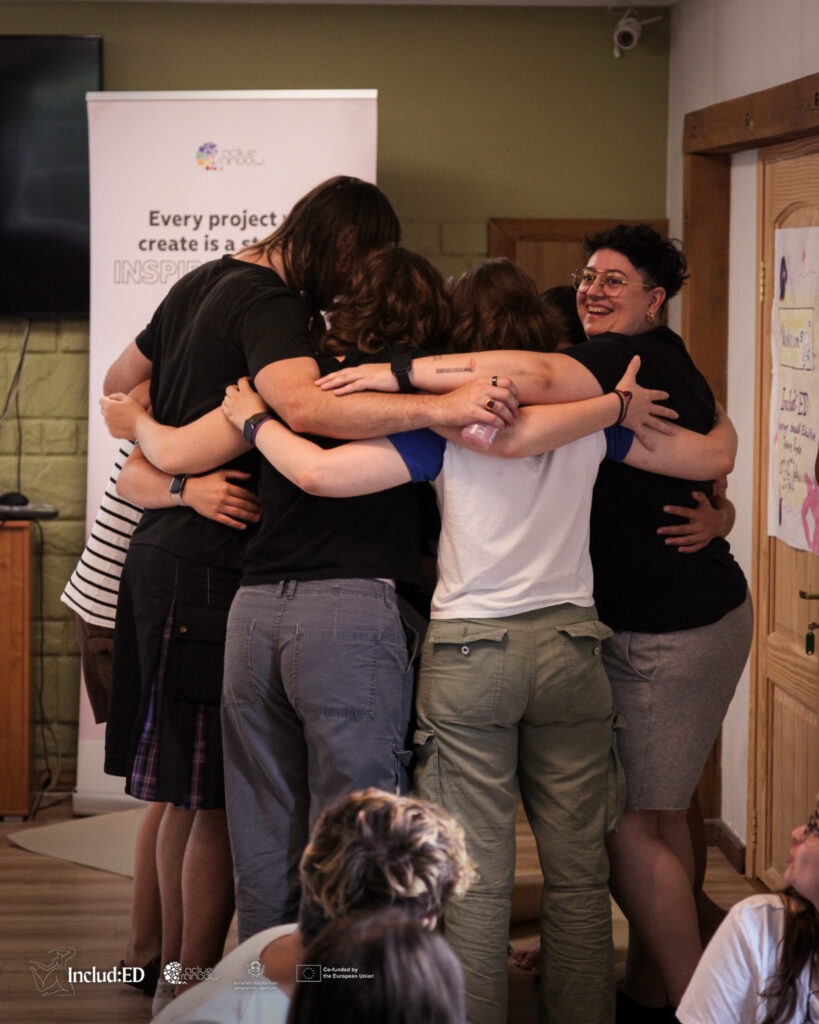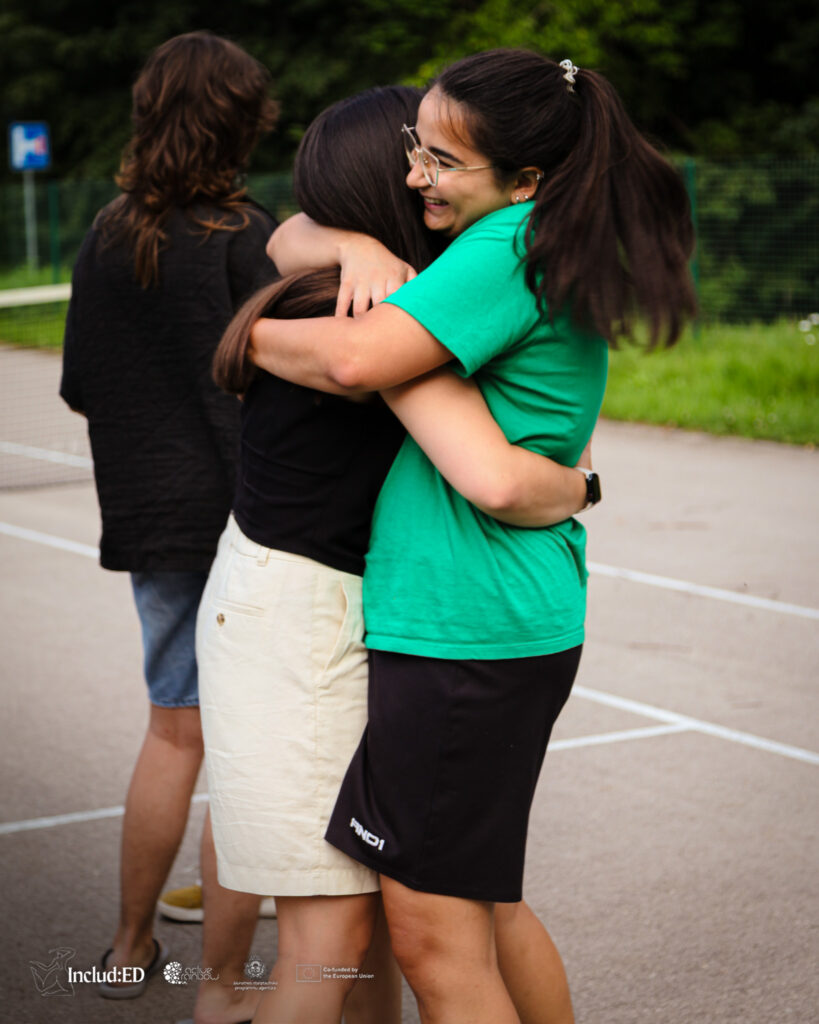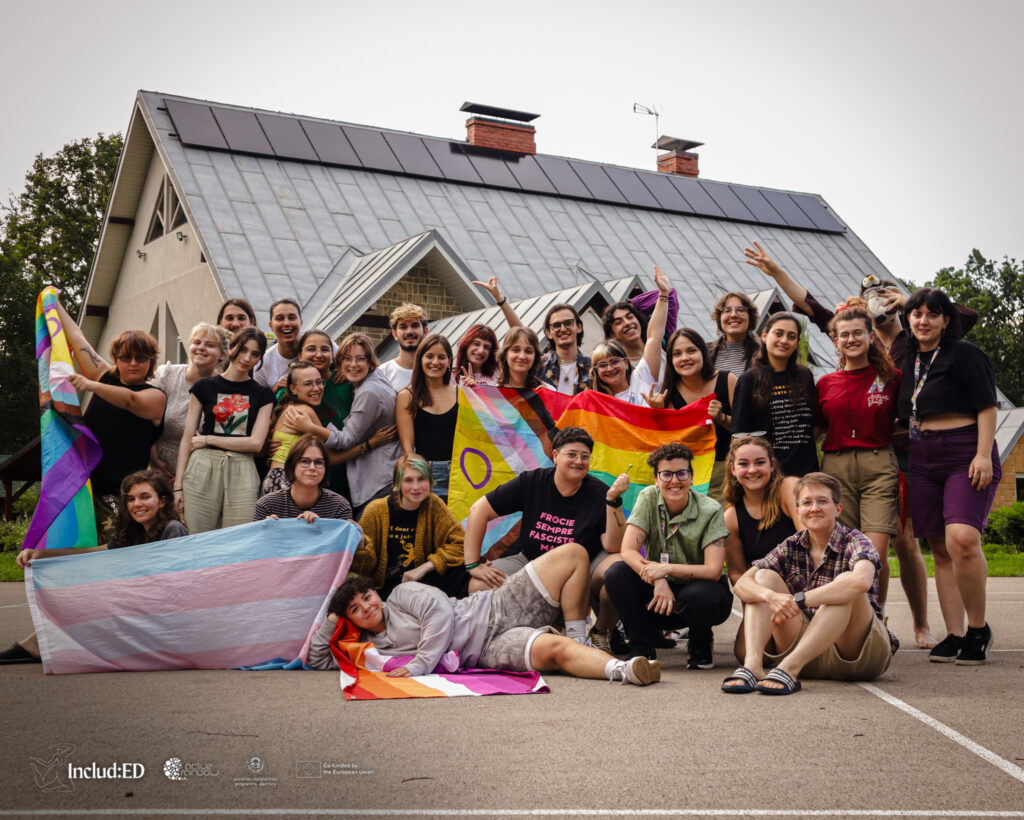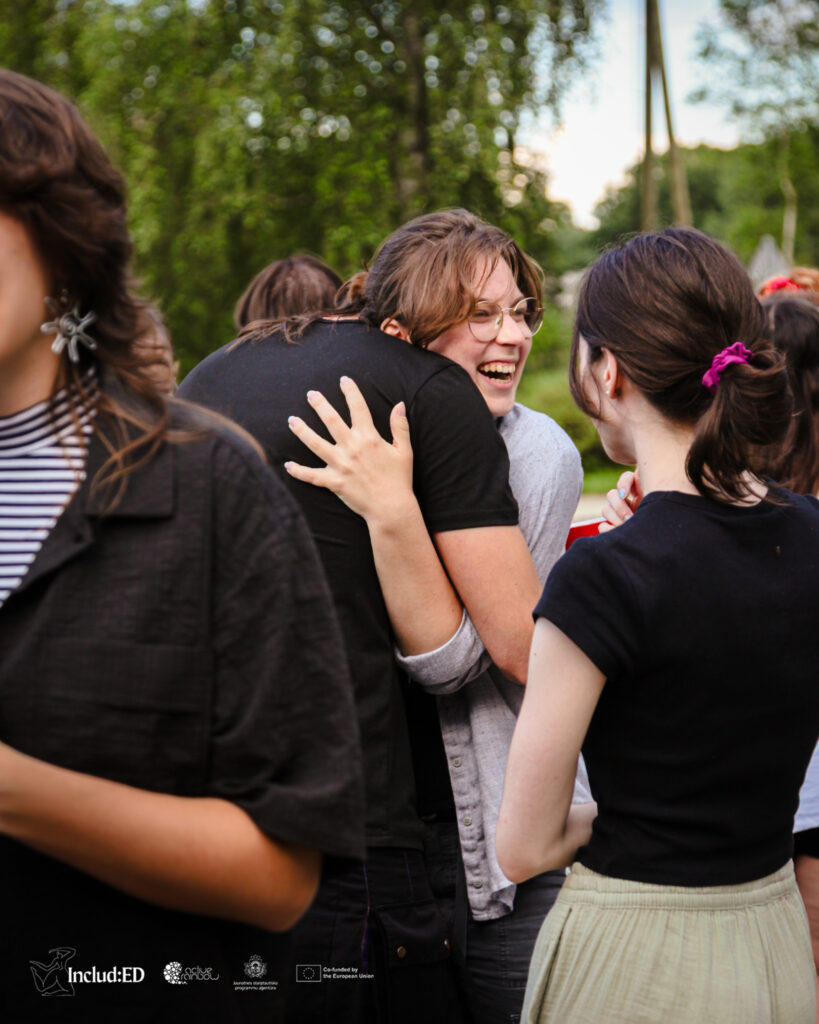What we learned at Includ:ED: A transformative experience in Latvia
Spanish team: Delfina, Ada and Eva
Participating in the Includ:ED – Queering Sexual Education project in Latvia was a very enriching training experience. During eight immersive days, we dipped ourselves in a collective learning environment, with non-formal methodologies that prioritized care, empathy, corporeality and critical thinking. We shared this journey with activists, educators and youth workers from Spain, Greece, Italy, Slovenia, Bulgaria, Serbia, Moldova and Latvia,
with the common goal of transforming sexuality education towards a more inclusive, intersectional and queer model.

One of the key learnings was the importance of respectful and inclusive language. It is not only about respecting everyone’s pronouns, but also about creating a space where each person can express their identity without fear of being judged. Through dynamics such as pronoun presentations, we reflected on how small gestures can make a difference in building safe environments.
We learned to disarm binarism and understand that gender is not the same as sex, that sexual orientation does not determine identity, and that gender expression is free and diverse. We saw this with tools such as the “gender galaxy”, which replaces old models such as the genderbread person, and helped us to visualize the fluidity and complexity of our identities.
Another fundamental axis was consent: freely given, reversible, informed, enthusiastic and specific. We worked on it with real examples, discussions and role-plays that allowed us to recognize when there is consent and when there is not. This practical approach, adapted even for children, showed that consent is learned from an early age and that it is the basis of any healthy bond.

In the pleasure module, we demolished myths about sexuality. We talked about enjoyment as a right, not only from genitality or reproduction, but as connection, self-exploration and enjoyment. We addressed topics such as masturbation, sex toys, their history, dissident desire and the importance of disarming the taboo that exists around pleasure. In addition, we learned how to break beauty standards. We used art to represent real, diverse genitalia to make visible what traditional education and the media often make invisible. This activity was especially powerful because it allowed us to re-signify the diversity and creativity of each of us.
From theory and practice, the program also provided us with tools to promote critical thinking. We dismantled social stigmas such as “in a relationship of two women there is one who is like a man”, “asexual people are like that because they have a trauma” or “lesbians hate men”. We also reflect on concepts such as relational anarchy,
non-monogamous relationships, and the social ladder that is established within an allocisheteronormative world.

The project also employed movement activities as a way of understanding concepts and ourselves. For example, themes related to relational anarchy such as the horizontalization of affections were exposed through the coordination of movements between couples and trios, and the exploration of consent to physical contact. These dynamics allowed us to connect with the ideas in a more sensorial way, and were then complemented by a theoretical explanation.
Participating in this international meeting allowed us to broaden our perspective on sex education, connect with people with whom we share queer experiences but very different realities due to the social and cultural context of different countries, and develop very interesting ideas to apply in our local areas in Spain.

